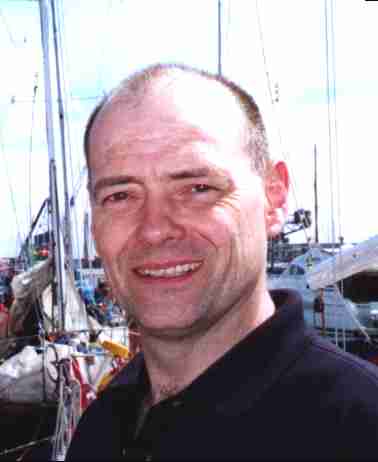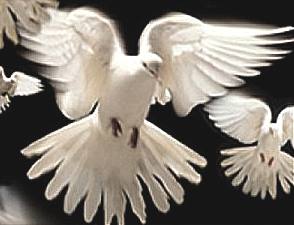|
New
Year's Day is the start of a
new year and the chance to reflect on years gone by and resolve to change
that we know was not so good.
What
did you achieve in 2007. What would you change and how could this have
helped yourself and your neighbours? The fact is we all work hard to
survive and build a future.
I'd
like to take this opportunity to wish everyone a very happy and
productive 2008. If you believe in something and work long and hard
enough to that end, you may get what you are hoping for.

Nelson
Kruschandl - "Happy New Year everyone"
New Year's Day is the first day of the year, in the Gregorian calendar, falling exactly one week after
Christmas Day of the previous year. In modern times, it is January 1. In most countries, it is a holiday. It is a holy day to many of those who still use the Julian calendar, which includes followers of some of the Eastern Orthodox churches, and is celebrated on January 14 of the Gregorian calendar due to differences between the two calendars. It is usually celebrated with fireworks.
Some churches celebrate the circumcision of
Christ on New Year's day. This practice is based on the belief that since the Christ's birth date is December 24, his circumcision according to Jewish tradition must have taken place on the eighth day after his birth which is New Year's day.
Modern practices
January 1 marks the end of a period of remembrance of a particular passing year, especially on radio,
television, and in newspapers, which usually starts right after Christmas Day. Publications often have year-end articles that review the changes during the previous year. Common topics include politics, natural disasters, music and the arts, and the listing of significant individuals who died during the past year. Often there are also articles on planned or expected changes in the coming year, such as the description of new laws that often take effect on January 1.
This day is traditionally a religious feast, but since the 1900s has become an occasion for celebration the night of December 31, called New Year's Eve. There are often fireworks at midnight. Depending on the country, individuals may be allowed to burn fireworks, even if it is forbidden the rest of the year.
It is also a memorable occasion to make New Year's resolutions, which they hope to fulfill in the coming year; the most popular ones in the western world include to stop tobacco smoking or drinking
alcohol, or to lose weight or get physically
fit.
In all countries that use the Gregorian calendar, with the exception of Israel, New Year's Day is a public holiday.
History
See also: Old Style and New Style dates, Julian year (calendar), and Lunisolar calendar
Originally observed on March 15 in the old Roman Calendar, New Year's Day first came to be fixed in January 1, 153 BC, when the two Roman consuls, after whom - in the Roman calendar - years were named and numbered, began to be chosen on that date, for military reasons. However in AD 525, Dionysius Exiguus set the start of the Julian calendar on March 25[citation needed] to commemorate the Annunciation of Jesus; a variety of Christian feast dates were used throughout the Middle Ages to mark the New Year, while calendars often continued to display the months in columns running from January to December in the Roman fashion.
Among the 7th-century druidic pagans of Flanders and the Netherlands it was the custom to exchange gifts at the New Year, a pagan custom deplored by Saint Eligius (died 659 or 660), who warned the Flemings and
Dutchmen, "[Do not] make vetulas, [little figures of the Old Woman], little deer or iotticos or set tables [for the house-elf, compare Puck] at night or exchange New Year gifts or supply superfluous drinks [another Yule custom]." The quote is from the vita of Eligius written by his companion Ouen.
Most countries in Western Europe officially adopted January 1st as New Year's Day somewhat before they adopted the Gregorian calendar. This is sometimes called Circumcision Style, because this was the date of the Feast of the Circumcision, being the eighth day counting from December
25.
Specific, high-profile or common celebrations
New Year's Day
Aries in the Hindu month of Chithrai (mid April) and observed for more than 5100 years in Kali Yuga.
In England and Scotland an extra round of football fixtures is played (unless New Year's Day falls on a Friday or Sunday).
In Pasadena, California, United States, the Tournament of Roses is held, with revelers viewing the parade from the streets and watching on television, followed by the Rose Bowl football game.
The aforementioned Rose Bowl football game is one of several postseason bowl games played in college football in the United States (though in recent years it, due to its involvement in the BCS, has not always fallen on New Year's Day; changes in the BCS mean that the Rose Bowl will return as a perennial New Year's Day fixture).
Vienna New Year Concert, in Austria.
Polar Bear Clubs: in many northern hemisphere cities near bodies of water, they will have a tradition of people plunging into the cold water on New Year's Day. The Coney Island Polar Bears Club in New York is the oldest cold-water
swimming club in the United States. They have had groups of people enter the chilly surf since 1903.
In Philadelphia, the Mummers Parade is held on Broad Street.
Hindu New Year, which falls at the time and date Sun enters Mesha. Hindus celebrate the new year by paying respects to their parents and other elders and seek their blessings. They also exchange tokens of Good Wishes (Kai Vishesham).
The New Year's Day Parade is held in London. Performers include acts from each of the city's 32 boroughs, as well as entertainment from around the world.

New Year's Eve
In Brazil, two major cities, Rio de Janeiro and São Paulo, celebrate the New Year. Most famously in Rio de Janeiro, the world's biggest and most famous fireworks display, which occurs in the also famous Copacabana beach, drawing 1.5 to 2.5 million people to the beach.
Sydney leads the world in one of the first major New Year celebrations each year.In Australia, celebrations are held around the nation, especially in Sydney, where one of the world's largest fireworks displays draws 1 to 1.5 million people to the harbour.
Australia was one of the first countries in the world to celebrate the new year.
In New York City, the world famous 1,070-pound, 6-foot-diameter Waterford crystal ball located high above Times Square is lowered starting at 11:59:00 p.m., or the last minute of the year, and reaches the bottom of its tower at the stroke of midnight. It is sometimes referred to as "the big apple" like the city itself; the custom derives from the time signal that used to be given at noon in harbors.
Other ball drops occur in Copacabana beach in Rio de Janeiro and Sydney Harbour.
In The Netherlands, Denmark and other European countries, the New Year is greeted with massive private fireworks. This day is also the occasion to make bonfires of discarded Christmas trees in some countries.
In Russia the New Year is greeted by fireworks and drinking champagne. The New Year is considered a family celebration, with lavish dinner tables and gifts. The president of Russia normally counts down the final seconds of the "old year", as it is called in
Russia. A giant clock tower chimes in the new year, and it is customary to make a wish with each chime.
In South Korea, the most popular way of celebrating New Year's Day is to travel to Jung dong jin, the place on the peninsula where the sun can first be seen each day.
In Nassau, Bahamas they have the Junkanoo
parade.
Some mayors in North America hold New Year levees.
In Scotland, there are many special customs associated with the New Year. For more information, see Hogmanay, the Scots name for the New Year celebration.
The Peach Drop in Underground Atlanta, Atlanta, Georgia, United States.
In Davos, Switzerland, the final match of the Spengler Cup Ice Hockey Tournament is usually held on this day by tradition.
In the Philippines, people light fireworks, loud firecrackers, booming sound system, bamboo canons as well as make a lot of noise to ward off evil spirits. Coins are also jumbled in tin cans to make noise with the belief that this will bring more money to the revelers.
It is also very popular to kiss loved ones on New Years Eve to celebrate love and happiness.
Images associated with New Year's Day
In the United States, a common image used is that of an incarnation of Father Time (or the "Old Year") wearing a sash across his chest with the previous year printed on it passing on his duties to the Baby New Year (or the "New Year"), an infant wearing a sash with the new year printed on it.
New Year's babies
People born on New Year's Day are commonly called New Year babies. Many hospitals give out prizes to the first baby born in that hospital in the new year. These prizes are often donated by local businesses. Prizes may include various baby related items such as
baby formula, baby blankets, gift certificates to stores which specialize in baby related merchandise, and diapers.
New Year's greetings in English
In the anglophone world, it is common to wish another well for the New Year. These are some of the typical phrases seen on cards or heard in
greeting:-
-
Happy New Year.
-
Have a happy new year.
-
I (or we) wish you a happy new year.
-
Wishing you a happy new year!
-
With best new year's wishes.
-
May the new year turn out to be the happiest and the best for you.
-
May the new year be a happy one for you.
-
May all your hopes and plans for this year come true.
-
I hope this year will be a very happy one for you.
-
Happy New Year! May this year be happy and fruitful.
-
We are very grateful to you for the kindness you showed us last year.
-
Thanks for the kindness you showed me last year.
-
Happy New Year 2008!
-
I hope 2008 brings you peace and happiness.
-
I hope that 2007 was a good year for you and that 2008 will be even better.
New
Year's Eve | New
Year's Day | Resolutions
| Peace Message
LINKS

Raise
your expectations for a safer future
......
.......
The World in Your Hands

330ml
alu Earth Can
|


